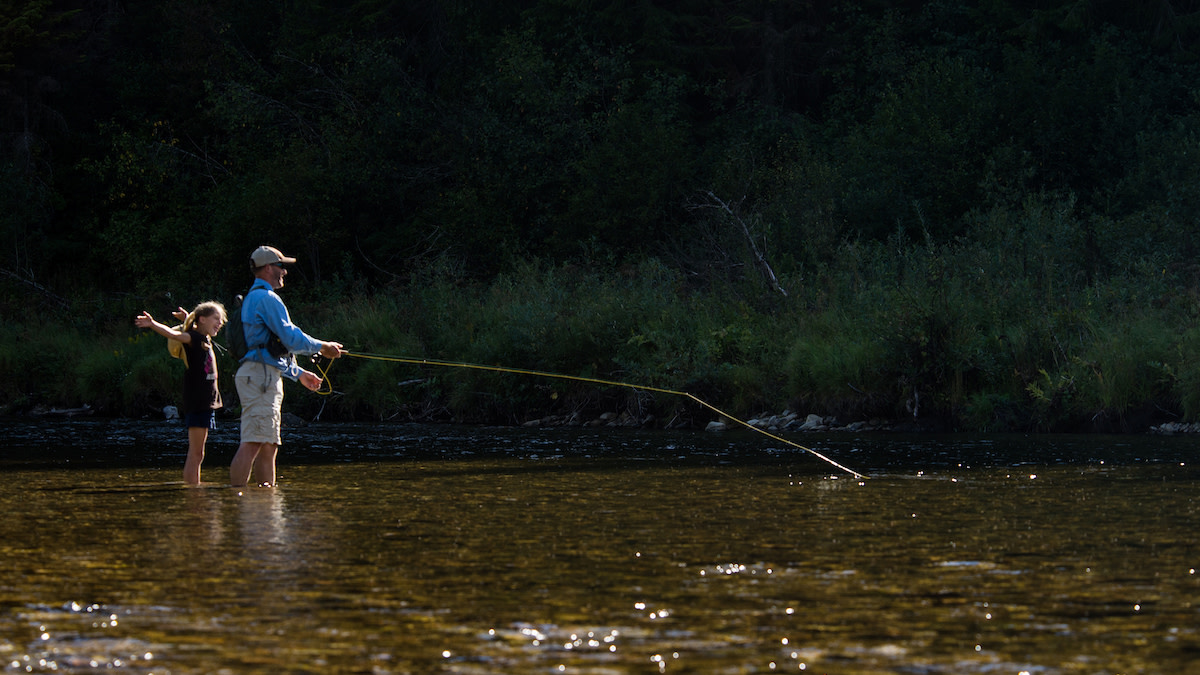
Every new angler wants to be able to cast an entire fly line or launch a lure all the way across the lake. But that drive for technical prowess often leads people to miss the fish at their feet.
Fish of all species are often found hugging the banks of lakes and rivers, hiding or hunting in shoreline structure and under riparian vegetation. Pike, bass, salmon, trout—there’s hardly a freshwater fish I’ve encountered that consistently requires long casts. Of course, there are certain scenarios when the hero casts are advantageous, but there are probably more when they’re not.
The desire to cast far isn’t method-specific—it’s just as rewarding to watch a levelwind worm gear whirl as it is to feel yards of fly line rocket through the guides. Lengthy casts are an indication of practise and dedication, but they also can slow down the pace of the day by taking extra time to reach their desired target and return from it. The question, however, is not so much if long casts are satisfying—it’s if it’s worth it to catch fewer fish.
So, next time you wind up to blast a spoon or streamer into the stratosphere, here are a few things to consider:
The General Rule
On the water, it’s always important to ask yourself where fish are most likely to be holding. This obviously depends on the time of year and the species you’re targeting, but as a general rule, fish won’t exert more energy than they consume. In rivers, fish will hold in slower water that won’t unnecessarily use up their energy reserves. The food sources for most popular gamefish—insects, crustaceans, baitfish—usually associate with shorelines, so target species will stay nearby.
Murky Water
Fish tend to hug the shore when the water is murky, often to avoid the heavy currents associated with turbid water. They can also tolerate swimming shallower because the opaque water makes them harder for predators to see. This means anglers need to pay extra attention to the river or lake bottom—both for safety and efficiency. Snagging up before your setup has even had the chance to make it into the shallows means the fish don’t have an opportunity to see it. To make the most of these situations, anglers should cast short and wade shallow.
Hatches
Shorelines comprised of overhanging trees and vegetation are the perfect setting for short casts. Many aquatic insects crawl out on banks to hatch or congregate in nearby bushes as adults. When these bugs fall into the water, they become easy prey for fish. Sometimes this occurs only inches from the shore. Mice, frogs, grasshoppers, beetles and other terrestrials are just as vulnerable. When a fish is honed into a hatch, it can be pointless to fish anything else, but fishing their food source in the abyss can be just as purposeless.
River Currents
Tempting as it is to land your presentation directly into a river’s swift current, most of us soon learn that fish hold on either side of the fast water, rather than in the torrent itself. Landing your fly, lure or float in the fast flow can accidentally pull your line through the water at speeds unproductive to fishing. Casting shorter, even if only by a couple feet, bypasses overpowering currents and unpredictable whirlpools. Water hydraulics vary depending on flow and structure, so it’s important to assess every situation differently. This ability is called “reading water” and it’s the difference between good anglers and great ones.
Line Control
Line control and management become increasingly difficult the more line you have out. With fly tackle, you’ll struggle to keep enough line off the water for a drag-free drift. With conventional gear, it is more difficult to land casts accurately and maneuver your presentation. With any fishing discipline, the more line out, the harder it is get a solid hook-set, due to slack and stretch in the line.
Over-Lining Fish
In many fisheries, it’s best to approach a fish out of its field of view. In water moving due to current or wind, fish will typically face into the current and it’s best to approach them from below. If you’re making long casts as you work the water, your line is more likely to pass over a fish’s head and possibly spook it. This is a bigger problem with thick, visible fly line but braid and even monofilament can scare fish. You can resolve this problem by making lots of short, deliberate casts that won’t overreach the fish you want to catch.
Learning to cast is one of the most involved and enjoyable elements in the education of any new angler. But you shouldn’t let the drive for distance overshadow the end game. It’s important to remember that casting is a tool designed to help us catch fish, not a tool meant to catch dirt on the opposite bank. True, there will be times when a long cast is necessary, but there will be just as many—if not more—when a short one will be your ticket to a productive day.
Feature image via Tosh Brown.





